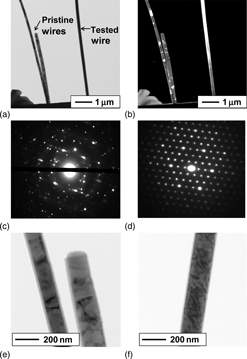Published online by Cambridge University Press: 16 June 2014

Monotonic and cyclic tension–tension tests with an upper stress in the GPa regime have been performed on Cu–Si nanowires. The results show that the exceptional high strength of these nanomaterials is maintained or even improved upon cyclic loading. Post-mortem transmission electron microscopy gives insight in the microstructural evolution. Fatigue-induced grain growth correlates with an observed increase in compliance, the formation of dislocation networks, and an increase in tensile strength.